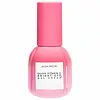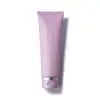What's inside
What's inside
 Key Ingredients
Key Ingredients

 Benefits
Benefits

 Concerns
Concerns

No concerns
 Ingredients Side-by-side
Ingredients Side-by-side

Water
Skin ConditioningCaprylic/Capric Triglyceride
MaskingGlycerin
HumectantNiacinamide
SmoothingBehenyl Alcohol
EmollientSorbitan Olivate
EmulsifyingCetearyl Olivate
Sodium Ascorbyl Phosphate
AntioxidantButylene Glycol
HumectantDiisostearyl Malate
EmollientTetrahexyldecyl Ascorbate
AntioxidantCetyl Palmitate
EmollientPsidium Guajava Fruit Extract
AstringentAmmonium Acryloyldimethyltaurate/Vp Copolymer
Simmondsia Chinensis Seed Oil
EmollientPsidium Guajava Seed Oil
Emollient3-O-Ethyl Ascorbic Acid
Skin ConditioningAscorbyl Glucoside
AntioxidantMagnesium Ascorbyl Phosphate
AntioxidantCaffeine
Skin ConditioningAcetyl Tetrapeptide-5
HumectantAcetyl Hexapeptide-8
HumectantSodium Hyaluronate
HumectantPolyglyceryl-10 Dioleate
EmulsifyingSorbitan Palmitate
EmulsifyingBatyl Alcohol
EmollientHydroxyacetophenone
AntioxidantCaprylyl Glycol
EmollientMelia Azadirachta Extract
Skin Conditioning1,2-Hexanediol
Skin ConditioningCitric Acid
BufferingPolyglyceryl-10 Dipalmitate
EmollientSodium Citrate
BufferingSodium Phytate
Tocopherol
AntioxidantFraxinus Excelsior Bark Extract
Skin ConditioningMoringa Oleifera Seed Oil
EmollientPhenoxyethanol
PreservativeDecyl Glucoside
CleansingLauryl Glucoside
CleansingPyrus Malus Fruit Extract
Skin ConditioningPotassium Citrate
BufferingSilanetriol
Musa Sapientum Fruit Extract
Skin ConditioningEthylhexylglycerin
Skin ConditioningPrunus Armeniaca Kernel Extract
Skin ConditioningPyrus Communis Fruit Extract
Skin ConditioningRubus Idaeus Fruit Extract
AstringentWater, Caprylic/Capric Triglyceride, Glycerin, Niacinamide, Behenyl Alcohol, Sorbitan Olivate, Cetearyl Olivate, Sodium Ascorbyl Phosphate, Butylene Glycol, Diisostearyl Malate, Tetrahexyldecyl Ascorbate, Cetyl Palmitate, Psidium Guajava Fruit Extract, Ammonium Acryloyldimethyltaurate/Vp Copolymer, Simmondsia Chinensis Seed Oil, Psidium Guajava Seed Oil, 3-O-Ethyl Ascorbic Acid, Ascorbyl Glucoside, Magnesium Ascorbyl Phosphate, Caffeine, Acetyl Tetrapeptide-5, Acetyl Hexapeptide-8, Sodium Hyaluronate, Polyglyceryl-10 Dioleate, Sorbitan Palmitate, Batyl Alcohol, Hydroxyacetophenone, Caprylyl Glycol, Melia Azadirachta Extract, 1,2-Hexanediol, Citric Acid, Polyglyceryl-10 Dipalmitate, Sodium Citrate, Sodium Phytate, Tocopherol, Fraxinus Excelsior Bark Extract, Moringa Oleifera Seed Oil, Phenoxyethanol, Decyl Glucoside, Lauryl Glucoside, Pyrus Malus Fruit Extract, Potassium Citrate, Silanetriol, Musa Sapientum Fruit Extract, Ethylhexylglycerin, Prunus Armeniaca Kernel Extract, Pyrus Communis Fruit Extract, Rubus Idaeus Fruit Extract
Water
Skin ConditioningCaprylic/Capric Triglyceride
MaskingGlycerin
HumectantPolyglyceryl-3 Methylglucose Distearate
EmulsifyingPropanediol
SolventGlyceryl Stearate
EmollientCetearyl Alcohol
EmollientXylitylglucoside
HumectantBetaine
HumectantPhospholipids
Skin ConditioningLinoleic Acid
CleansingGlycine Soja Sterols
EmollientCeramide NP
Skin ConditioningCeramide AP
Skin ConditioningCeramide EOP
Skin ConditioningPhytosphingosine
Skin ConditioningCholesterol
EmollientAloe Barbadensis Leaf Juice
Skin ConditioningTasmannia Lanceolata Fruit/Leaf Extract
AntioxidantCucumis Sativus Seed Oil
EmollientEctoin
Skin ConditioningHydroxyectoin
BufferingSodium Lauroyl Lactylate
EmulsifyingZingiber Officinale Root Extract
MaskingBisabolol
MaskingTocopherol
AntioxidantRosmarinus Officinalis Leaf Extract
AntimicrobialCarbomer
Emulsion StabilisingAnhydroxylitol
HumectantOryza Sativa Bran Extract
Skin Conditioning1,2-Hexanediol
Skin ConditioningStearic Acid
CleansingSodium Lauroyl Glutamate
Saccharide Isomerate
HumectantXylitol
HumectantTrisodium Ethylenediamine Disuccinate
Caprylhydroxamic Acid
Helianthus Annuus Seed Oil
EmollientXanthan Gum
EmulsifyingCitric Acid
BufferingSodium Citrate
BufferingWater, Caprylic/Capric Triglyceride, Glycerin, Polyglyceryl-3 Methylglucose Distearate, Propanediol, Glyceryl Stearate, Cetearyl Alcohol, Xylitylglucoside, Betaine, Phospholipids, Linoleic Acid, Glycine Soja Sterols, Ceramide NP, Ceramide AP, Ceramide EOP, Phytosphingosine, Cholesterol, Aloe Barbadensis Leaf Juice, Tasmannia Lanceolata Fruit/Leaf Extract, Cucumis Sativus Seed Oil, Ectoin, Hydroxyectoin, Sodium Lauroyl Lactylate, Zingiber Officinale Root Extract, Bisabolol, Tocopherol, Rosmarinus Officinalis Leaf Extract, Carbomer, Anhydroxylitol, Oryza Sativa Bran Extract, 1,2-Hexanediol, Stearic Acid, Sodium Lauroyl Glutamate, Saccharide Isomerate, Xylitol, Trisodium Ethylenediamine Disuccinate, Caprylhydroxamic Acid, Helianthus Annuus Seed Oil, Xanthan Gum, Citric Acid, Sodium Citrate
 Reviews
Reviews

Ingredients Explained
These ingredients are found in both products.
Ingredients higher up in an ingredient list are typically present in a larger amount.
1,2-Hexanediol is a synthetic liquid and another multi-functional powerhouse.
It is a:
- Humectant, drawing moisture into the skin
- Emollient, helping to soften skin
- Solvent, dispersing and stabilizing formulas
- Preservative booster, enhancing the antimicrobial activity of other preservatives
This ingredient is an emollient, solvent, and texture enhancer. It is considered a skin-softener by helping the skin prevent moisture loss.
It helps thicken a product's formula and makes it easier to spread by dissolving clumping compounds.
Caprylic Triglyceride is made by combining glycerin with coconut oil, forming a clear liquid.
While there is an assumption Caprylic Triglyceride can clog pores due to it being derived from coconut oil, there is no research supporting this.
Learn more about Caprylic/Capric TriglycerideCitric Acid is an alpha hydroxy acid (AHA) naturally found in citrus fruits like oranges, lemons, and limes.
Like other AHAs, citric acid can exfoliate skin by breaking down the bonds that hold dead skin cells together. This helps reveal smoother and brighter skin underneath.
However, this exfoliating effect only happens at high concentrations (20%) which can be hard to find in cosmetic products.
Due to this, citric acid is usually included in small amounts as a pH adjuster. This helps keep products slightly more acidic and compatible with skin's natural pH.
In skincare formulas, citric acid can:
While it can provide some skin benefits, research shows lactic acid and glycolic acid are generally more effective and less irritating exfoliants.
Most citric acid used in skincare today is made by fermenting sugars (usually from molasses). This synthetic version is identical to the natural citrus form but easier to stabilize and use in formulations.
Read more about some other popular AHA's here:
Learn more about Citric AcidGlycerin is already naturally found in your skin. It helps moisturize and protect your skin.
A study from 2016 found glycerin to be more effective as a humectant than AHAs and hyaluronic acid.
As a humectant, it helps the skin stay hydrated by pulling moisture to your skin. The low molecular weight of glycerin allows it to pull moisture into the deeper layers of your skin.
Hydrated skin improves your skin barrier; Your skin barrier helps protect against irritants and bacteria.
Glycerin has also been found to have antimicrobial and antiviral properties. Due to these properties, glycerin is often used in wound and burn treatments.
In cosmetics, glycerin is usually derived from plants such as soybean or palm. However, it can also be sourced from animals, such as tallow or animal fat.
This ingredient is organic, colorless, odorless, and non-toxic.
Glycerin is the name for this ingredient in American English. British English uses Glycerol/Glycerine.
Learn more about GlycerinSodium Citrate is the sodium salts of citric acid. In skincare, it is used to alter pH levels and acts as a preservative.
Its main functions are to maintain the pH of a product and neutralize metal ions.
The acidity of our skin is maintained by our glands and skin biome; normal pH level of skin is slightly acidic (~4.75-5.5).
Being slightly acidic allows our skin to create an "acid mantle". This acid mantle is a thin barrier that protects our skin from bacteria and contaminants.
Learn more about Sodium CitrateTocopherol (also known as Vitamin E) is a common antioxidant used to help protect the skin from free-radicals and strengthen the skin barrier. It's also fat soluble - this means our skin is great at absorbing it.
Vitamin E also helps keep your natural skin lipids healthy. Your lipid skin barrier naturally consists of lipids, ceramides, and fatty acids. Vitamin E offers extra protection for your skin’s lipid barrier, keeping your skin healthy and nourished.
Another benefit is a bit of UV protection. Vitamin E helps reduce the damage caused by UVB rays. (It should not replace your sunscreen). Combining it with Vitamin C can decrease sunburned cells and hyperpigmentation after UV exposure.
You might have noticed Vitamin E + C often paired together. This is because it is great at stabilizing Vitamin C. Using the two together helps increase the effectiveness of both ingredients.
There are often claims that Vitamin E can reduce/prevent scarring, but these claims haven't been confirmed by scientific research.
Learn more about TocopherolWater. It's the most common cosmetic ingredient of all. You'll usually see it at the top of ingredient lists, meaning that it makes up the largest part of the product.
So why is it so popular? Water most often acts as a solvent - this means that it helps dissolve other ingredients into the formulation.
You'll also recognize water as that liquid we all need to stay alive. If you see this, drink a glass of water. Stay hydrated!
Learn more about Water